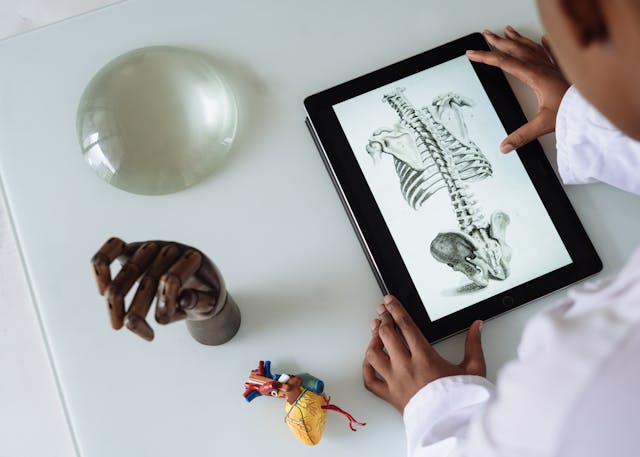Spinal disorders affect millions of people across the world, impacting mobility, comfort, and daily life. From degenerative conditions like herniated discs and spinal stenosis to traumatic injuries and congenital deformities, these issues require careful management and a multidisciplinary treatment plan. Advances in medical technology and research have paved the way for a more complete understanding of spinal health, allowing for a combination of approaches that go beyond traditional methods.
A comprehensive treatment plan often includes a mix of medical, therapeutic, and lifestyle-based strategies aimed at improving function and reducing pain. Understanding how these components work together can help patients and healthcare providers create pathways toward long-term recovery and improved quality of life.

Accurate Diagnosis and Individualized Treatment Planning
The foundation of effective spinal disorder management begins with an accurate diagnosis. Each patient presents with unique symptoms, underlying causes, and health histories, which must all be considered before designing a treatment plan. Advanced imaging techniques such as MRI and CT scans allow specialists to examine the spinal structure in detail, identifying nerve compression, disc degeneration, or alignment issues.
Once a diagnosis is established, an individualized treatment plan is created, often involving input from orthopedic surgeons, neurologists, physical therapists, and pain management specialists. This tailored approach ensures that therapy is safe and effective, targeting the precise source of discomfort and preventing unnecessary procedures or interventions.
Pain Management and Non-Surgical Therapies
Managing spinal pain often starts with conservative treatments that aim to relieve discomfort before surgery becomes necessary. Patients experiencing chronic pain from conditions that might eventually require disc replacement often explore non-surgical methods to delay or avoid the need for an operation. Therapies such as physical rehabilitation, anti-inflammatory medications, and image-guided injections can effectively reduce pressure on affected nerves and restore mobility.
Some individuals incorporate chiropractic adjustments, acupuncture, or therapeutic massage to complement these approaches. These methods improve pain tolerance and enhance spinal health, giving patients a chance to recover function and stability without immediately resorting to surgical intervention.
Physical Therapy and Rehabilitation
Physical therapy plays a central role in the recovery and long-term management of spinal disorders. Exercise programs are designed to strengthen the muscles that support the spine, improve flexibility, and restore proper posture. Techniques may include stretching routines, core stabilization exercises, and low-impact aerobic conditioning.
A skilled therapist helps patients regain mobility, minimize stiffness, and reduce the risk of future injuries. Rehabilitation programs are typically progressive, starting with gentle movements and advancing to more demanding exercises as strength and endurance improve. The consistency of these sessions contributes to better spinal alignment and a significant decrease in chronic pain symptoms, often delaying or even avoiding the need for surgical intervention.
Minimally Invasive and Surgical Treatments
When conservative treatments fail to relieve pain or restore function, surgical intervention may be considered. Modern spine surgery has evolved tremendously, focusing on techniques that minimize tissue damage and speed up recovery times. Procedures such as microdiscectomy, spinal fusion, and laminectomy are performed using small incisions and advanced imaging guidance to increase precision and reduce complications.
Patients who undergo minimally invasive spine surgery often experience less postoperative discomfort, shorter hospital stays, and faster returns to daily activities. Careful postoperative monitoring and follow-up care are critical, as they help identify early signs of complications and promote smoother recovery through physical therapy and pain management strategies.
Lifestyle Modifications and Preventive Strategies
Long-term management of spinal disorders often extends beyond clinical treatment. Maintaining a healthy weight, improving posture, and engaging in regular physical activity can all reduce pressure on the spine and lower the likelihood of recurring issues. Ergonomic adjustments in the workplace or home environment are equally valuable in preventing strain and promoting spinal health.
Proper nutrition supports bone density and tissue repair, while stress management techniques such as yoga and mindfulness can help alleviate muscle tension that exacerbates pain. These preventive strategies empower patients to take an active role in their recovery and maintain spinal stability long after formal treatment concludes.
The Role of Multidisciplinary Care
Successful outcomes in treating spinal disorders are often the result of coordinated efforts between multiple healthcare professionals. Collaborative care brings together expertise from different medical disciplines to address physical and psychological aspects of spinal health. Pain management specialists focus on comfort, surgeons handle structural correction, and physical therapists support mobility and strength restoration.
Mental health professionals may play a role in helping patients manage the emotional challenges that come with chronic spinal pain. This integration of care enhances treatment effectiveness and helps patients achieve a balanced and sustainable recovery process.

A comprehensive approach to treating spinal disorders requires coordination between accurate diagnosis, physical rehabilitation, pain management, and lifestyle improvements. By embracing multidisciplinary care, patients can experience more consistent relief and better functional outcomes.
The goal is to manage pain and to restore independence and quality of life through well-structured, evidence-based treatment plans. Spinal health is central to mobility and well-being, and addressing it through a combination of personalized care methods remains one of the most effective ways to support lasting recovery.


